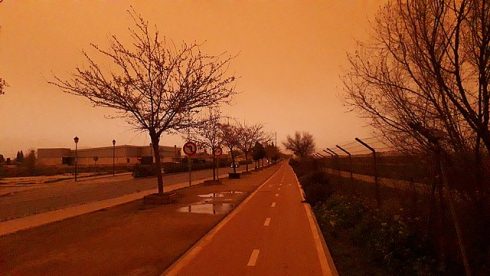DUST from the Sahara Desert is set to hit southern Spain this week as temperatures continue to remain unseasonably high.
Hazy conditions – known as the ‘calima’ – are expected to impact the Costa del Sol from Monday, January 29, having already clouded skies above the Canary Islands.
Meanwhile, temperatures are set to cool following last week’s ‘historic heat’ which saw highs of 30C on the peninsular.
However, the weather will continue to be warmer-than-average, with temperatures of 20C forecast throughout southern Spain.

The spring-like spell of weather is due to a powerful anticyclone block preventing the arrival of Atlantic storms.
The anticyclone has brought a band of high pressure to the area, encouraging clear skies and low levels of precipitation.
AEMET, the Spanish government’s meteorological service, expects no rain until at least mid-February.
The forecast will undoubtedly be cause for concern for residents and authorities across Spain as fears of incoming water restrictions continue to mount.
Andalucia is currently in the midst of its longest drought in 50 years, with fears rising that draconian water cuts could be imposed, akin to the infamous drought of 1995.
Reservoir levels across the region are continuing to diminish, with Malaga’s reserves operating at just 15.75% of their capacity.
The situation is even more dire in Almeria where reservoirs are only 9.38% full.

Juan Moreno, the Junta president, recently warned that the region would need at least 30 days of rainfall in order to prevent restrictions this summer.
Fuengirola, with a population of 90,000, became the first large town on the Costa del Sol to introduce new measures, with water pressure reduced at night.
The regional government plans to approve €200m of additional investment funneled towards anti-drought schemes, including money allocated to fix leaky water pipes.
Estepona, situated on the Costa del Sol’s western stretch, has applied for a licence to build a well-water desalination plant which would provide the town with an additional 2,900 cubic metres of potable water.
The municipality, with a population of 70,000, is also in the process of securing permission to build a desalination plant that would use seawater to increase the town’s water sources by 20,000 cubic metres per day.
Andalucia is also not the only Spanish region to be impacted by drought – Catalunya have declared an emergency, with bans imposed on certain public showers and the filling of swimming pools.
READ MORE:


